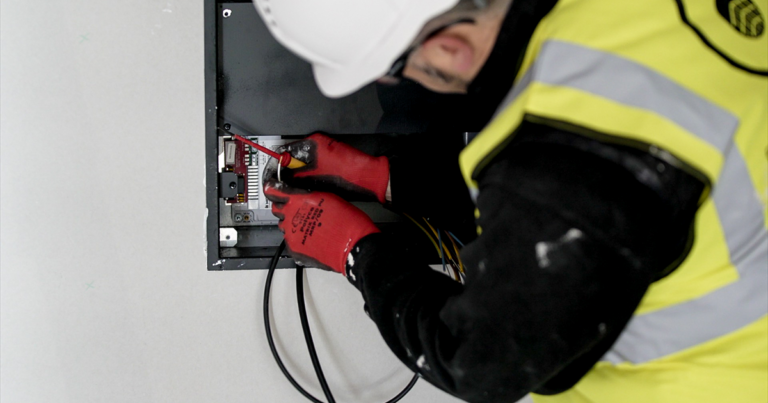Maintaining a smoke vent maintenance logbook is not just bureaucratic paperwork – it’s a lifeline for compliance and safety. Building owners and facilities managers should treat the logbook as a critical tool to stay inspection-ready at all times.
In the UK, fire safety regulators and insurance inspectors often demand proof that all life safety systems (including smoke ventilation) are serviced and functioning. A well-kept logbook provides this proof instantly, demonstrating that you’ve been diligent in testing and maintaining your smoke ventilation system. Below we explain why logbooks matter, what to record, and how to keep yours up to date for any surprise inspection.
Why Keep a Smoke Vent Maintenance Logbook?
Legal compliance
The Regulatory Reform (Fire Safety) Order 2005 (RRO) makes it a legal requirement for the responsible person to maintain all fire safety equipment and record those maintenance activities. Essentially, if it isn’t documented, it didn’t happen. Fire authorities can audit your premises at any time, and one of the first things they’ll ask for is evidence of maintenance. A logbook provides a chronological record of all tests, services, and repairs, proving that your smoke vents and related systems have been kept “in efficient working order and in good repair” as required by law.
Demonstrating safety management
Beyond legalities, a thorough logbook reflects a strong safety culture. UK government fire safety guides advise that up-to-date fire safety records (like maintenance logs) help you manage fire risk effectively and demonstrate compliance with the law. In fact, the quality of your record-keeping can be seen as an indicator of the overall quality of your fire safety management. A tidy, complete logbook shows stakeholders – from fire officers to insurers – that you take smoke control maintenance seriously.
Avoiding enforcement and insurance issues
Missing or inadequate maintenance records can lead to serious consequences. Authorities having jurisdiction (for example, local fire brigade inspectors) may issue enforcement notices or fines if you cannot produce evidence that smoke ventilation systems were tested and serviced on schedule. Likewise, insurance companies might invalidate fire damage claims if you cannot show that critical systems were maintained. In short, a logbook is your first line of defense during audits, helping you stay inspection-ready and avoid liability.
What to Record in Your Smoke Vent Maintenance Logbook
A smoke vent maintenance logbook should capture every significant action or finding related to your smoke control system’s upkeep. Key items to record include:
- Routine tests: Document all scheduled tests – from weekly functional checks to annual full services. Record the date, time, and outcome of each test, even if everything is working. The latest industry guidance says a detailed record should be kept in the system logbook for each test, along with the date and time. Consistency here shows nothing is overlooked.
- Faults and repairs: If any fault is discovered (e.g. a vent failing to open or a control panel fault light), note it immediately. Just as important, log what corrective action was taken and when. If a fault can’t be fixed right away, that should be highlighted and revisited until resolved. Inspectors will look to see that all faults recorded have received attention. Leaving faults logged with no follow-up is a red flag.
- Maintenance visits: Record each service visit by an engineer, including what was inspected or replaced. Attach or note any maintenance certificates provided by contractors. These certificates summarize the health of the system at that service – including any “pass with advisories” or failures – and are vital evidence of professional maintenance.
- Training and user checks: If on-site staff (a Nominated Person) perform weekly or monthly checks (like visual inspections of panels or manual call point tests), log those too. Note any training given to staff on operating or testing the smoke vents. This shows you have an internal process to catch issues between specialist visits.
By keeping these details up to date, you create a paper trail (or digital trail) that shows the system is under constant watch.
Best Practices for Staying Inspection-Ready
To ensure your logbook remains an asset and not an afterthought, consider these practices:
- Update in real time: Fill in the log immediately after each test or maintenance activity. It’s easy to forget details if you delay. Whether it’s a quick weekly smoke vent test or a full annual service, record it on the spot. Many organisations use digital logbooks or apps for convenience, but a dedicated binder on-site works as long as it’s consistently used.
- Be thorough but concise: Note what you did, what you found, and any action taken. For example: “12/09, 10:00 – Weekly AOV test: Stair 3 vent opened and closed correctly; no faults on panel. Signed, J. Smith (Facilities).” You don’t need an essay, but make it clear. If an issue is found, reference the follow-up: “Faulty battery discovered on 01/10 – replaced on 03/10, see certificate.” This level of detail shows proactive management.
- Include supporting documents: Keep all related documents with the logbook. This might include the manufacturer’s maintenance manual, previous inspection reports, risk assessments, and any correspondence with fire safety consultants. Having everything in one place makes an inspector’s job easier (and they’ll appreciate that). It also helps the next engineer understand the system’s history.
- Regularly review the logbook: Don’t just record data – review it periodically. Look for patterns or recurring issues (e.g. a vent that sticks repeatedly). This can prompt pre-emptive repairs or upgrades. Also ensure no scheduled service was missed; if you find a gap (say an annual check that didn’t happen), schedule it immediately and document the catch-up. This habit shows that management is actively involved in the maintenance program, not just filing paperwork.
Being Prepared for Fire Safety Inspections
When the day comes for a fire safety audit or Fire Risk Assessment review, a complete logbook puts you in a strong position. Ensure the log (or a copy) is readily accessible on site – regulators often expect it to be available for inspection. Walk through it beforehand and tab any critical sections (like the latest annual certificate, or any major repairs done) so you can quickly point them out. If you can readily show evidence of regular maintenance and prompt issue resolution, inspections tend to go smoother and quicker.
Remember, an inspection-ready logbook isn’t just about passing a one-time test – it’s about having continuous confidence that your smoke ventilation system is maintained and will perform when needed. It’s a reflection of your commitment to safety. As one fire safety guide notes, keeping a dedicated record of all maintenance is considered best practice, especially in larger or more complex buildings. It’s not only a compliance exercise but a smart life-safety strategy.
Being diligent with logbooks and maintenance can be time-consuming, but you don’t have to manage it alone. FDS Maintenance offers comprehensive smoke vent maintenance service, including detailed record-keeping to keep you inspection-ready year-round. Let our experts take the guesswork out of compliance.
Get in touch with FDS Maintenance today to ensure your smoke ventilation systems are serviced, documented, and always ready for inspection.





